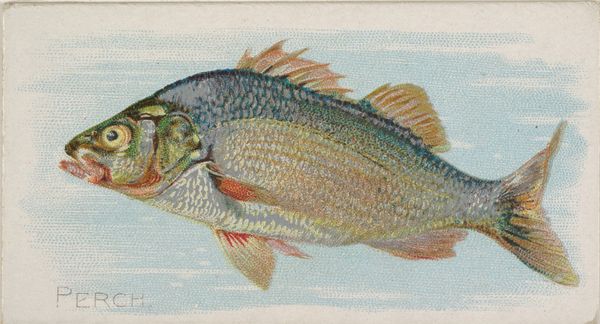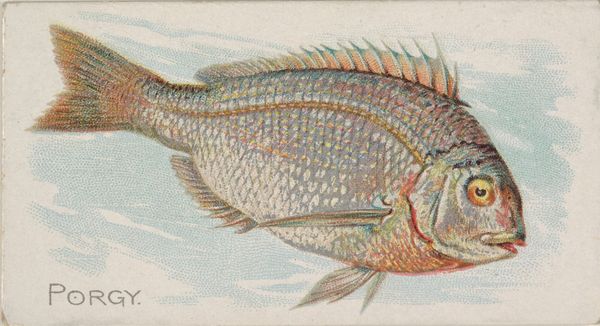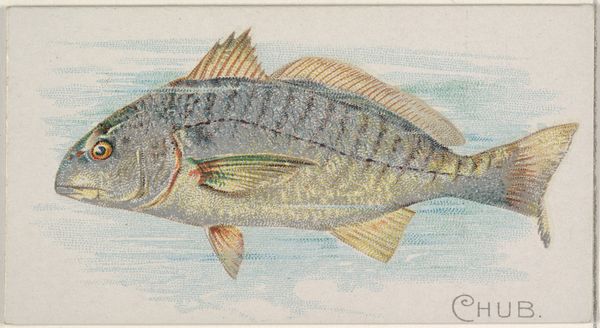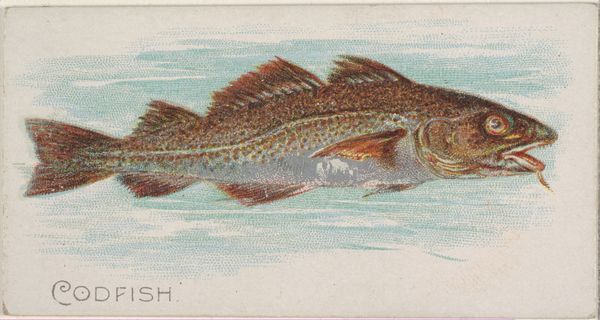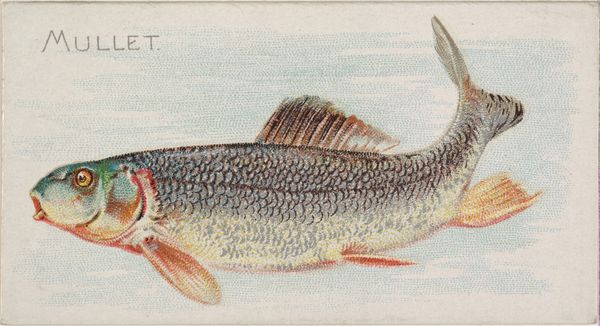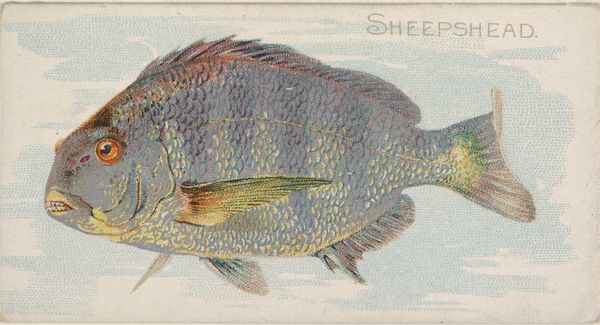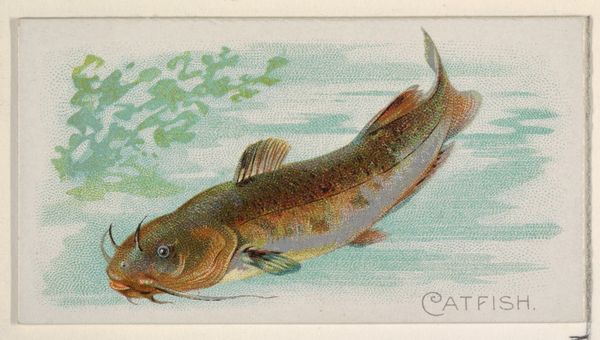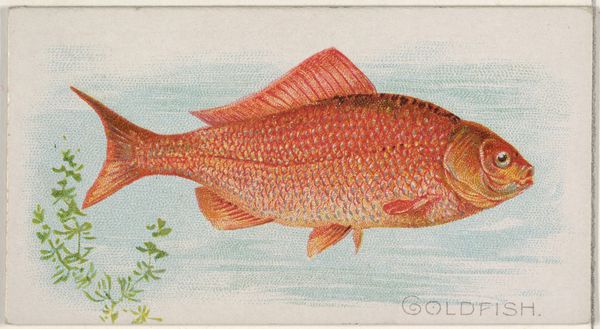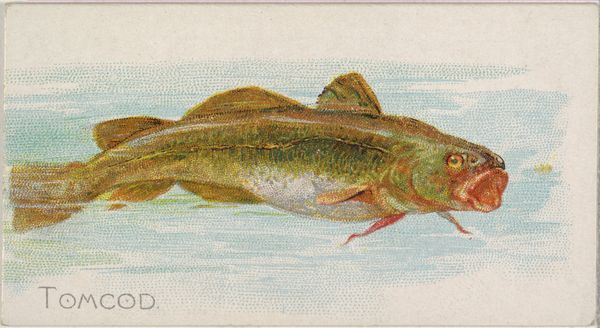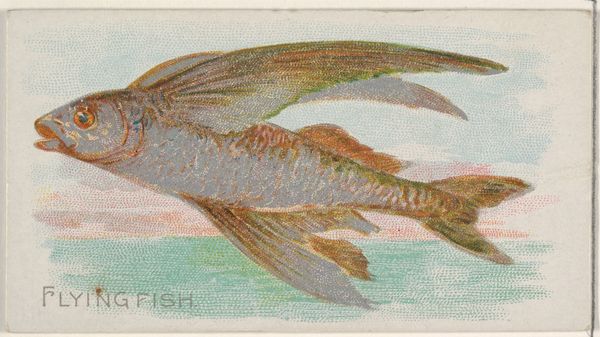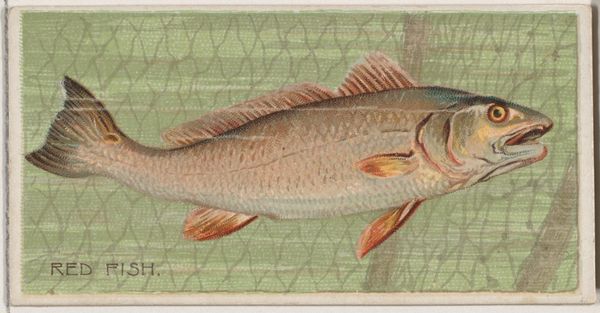
Carp, from the Fish from American Waters series (N8) for Allen & Ginter Cigarettes Brands 1889
0:00
0:00
# print
#
coloured pencil
Dimensions: Sheet: 1 1/2 x 2 3/4 in. (3.8 x 7 cm)
Copyright: Public Domain
Editor: So this is "Carp" from the Fish from American Waters series by Allen & Ginter, dating back to 1889. It's a print with coloured pencil, and I'm immediately drawn to how… flat it seems, almost like a woodblock print, even though the pencils give it some texture. What strikes you about it? Curator: I see the print first and foremost as a commodity object, not fine art. We must consider its context: trade cards packaged with cigarettes. This tells us about 19th-century advertising, consumer culture, and even the dissemination of visual information before mass media. Note the choice of "American Waters." What does this emphasis on locality signify, when exotic influences from the Ukiyo-e style are undeniable? Editor: That's a good point. The composition and subject matter definitely recall Japanese prints. I see what you mean about it being a commodity - something meant to be collected and traded. How does the medium choice fit into that? Curator: Precisely! The coloured pencil, readily mass-produced, becomes essential to its function. What boundaries does it challenge, if any? Editor: I guess I always separated mass produced print from art, but here they mingle together…It also challenges the boundary between science illustration and… well, marketing! I didn’t expect that. Curator: Exactly. Now you're seeing how the seemingly simple choice of medium and context opens up questions about labor, distribution, and the perceived hierarchy of art forms. This print serves to document the “American Waters” but its main purpose was really commercial. Editor: This makes me think differently about everyday images – everything has a purpose and says a lot about our consumer society. Curator: Indeed. By looking at its materiality and means of production, we gain a deeper understanding of the world this image inhabited.
Comments
No comments
Be the first to comment and join the conversation on the ultimate creative platform.
